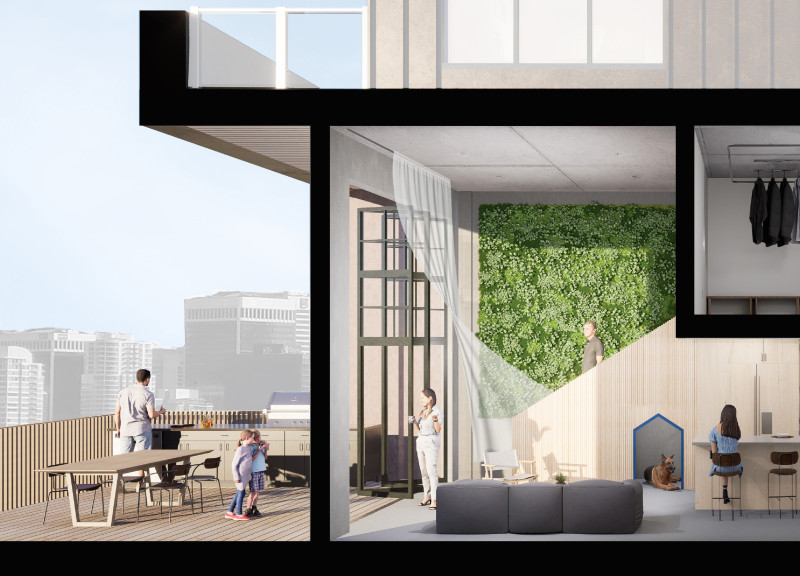5 key facts about this project
At the heart of the design lies a commitment to sustainability and environmental harmony. The architectural approach embraces natural materials alongside modern construction techniques, promoting an ethos of durability and environmental responsibility. The use of concrete, wood, glass, and steel throughout the project demonstrates a careful selection of elements that not only fulfill structural needs but also contribute to a holistic aesthetic. The careful consideration of materiality is evident in the textures, colors, and finishes chosen for the project, which complement the surrounding landscape while enhancing the user's experience.
One notable aspect of the design is its adaptability to the local climate, which informs both the interior and exterior spaces. Large windows and open layouts allow for ample natural light, reducing dependency on artificial lighting and enhancing the connection between indoor and outdoor environments. The building is oriented to take advantage of prevailing winds and natural ventilation, contributing to energy efficiency and promoting occupant comfort. These considerations showcase a thoughtful engagement with architectural ideas that prioritize user well-being and ecological impact.
A unique design feature is the incorporation of communal spaces that serve to foster social interaction among occupants. These areas are designed to encourage collaboration and connectivity, embodying the project’s vision of unity within the community. The arrangement of these spaces is strategic, ensuring that they are easily accessible and naturally integrated into the flow of the building. This organic layout not only enhances functionality but also promotes a sense of belonging and accessibility, which is essential in contemporary architectural discourse.
In addition to its communal aspects, the project also embraces innovation through the utilization of technology. Smart building systems are integrated seamlessly into the design, allowing for automation in lighting, climate control, and security. This commitment to technological integration reflects a forward-thinking mindset that anticipates future demands and enhances user interaction with the space. By leveraging these systems, the architecture not only responds efficiently to the needs of its users but also positions itself as a progressive example within its architectural context.
Moreover, careful attention has been given to the landscaping surrounding the project. The integration of green spaces and thoughtful planting schemes provides environmental benefits, such as stormwater management and biodiversity enhancement, while also creating serene outdoor spaces for relaxation and leisure. The approach to landscaping complements the architectural design, reinforcing the relationship between built and natural environments.
As visitors and users engage with this architectural project, they are invited to explore its many facets—ranging from the interplay of light and space to the careful selection of materials and community-oriented design strategies. The project stands as a model of what thoughtful, responsible architecture can achieve in a contemporary context. For those interested in delving deeper into the specifics of this remarkable endeavor, including architectural plans, architectural sections, and innovative architectural ideas, a thorough exploration of the project presentation is highly encouraged. This engagement will provide further insights into the concepts and methodologies that define this unique architectural achievement.


 Nathaniel Jason John Alkana
Nathaniel Jason John Alkana 




















